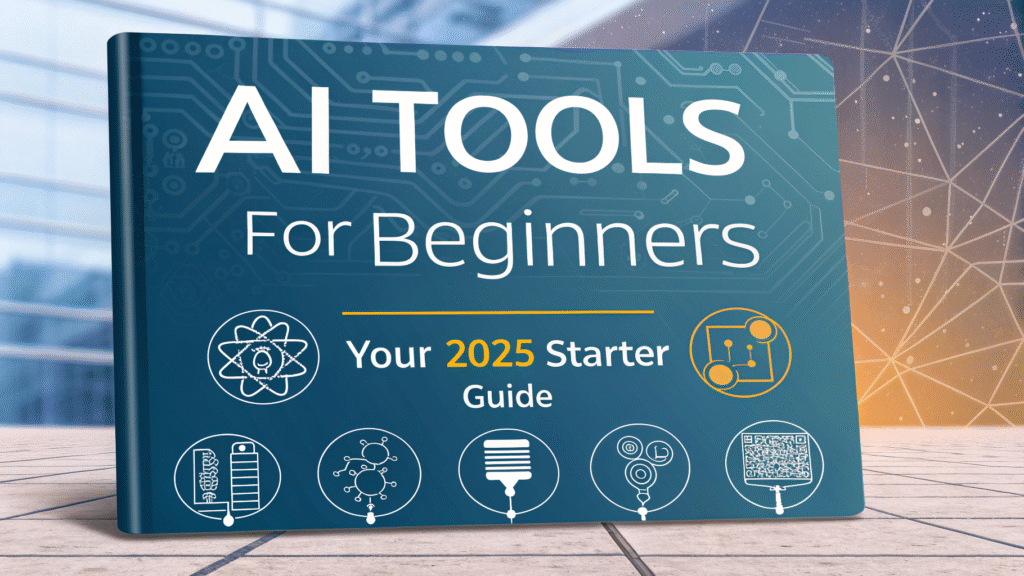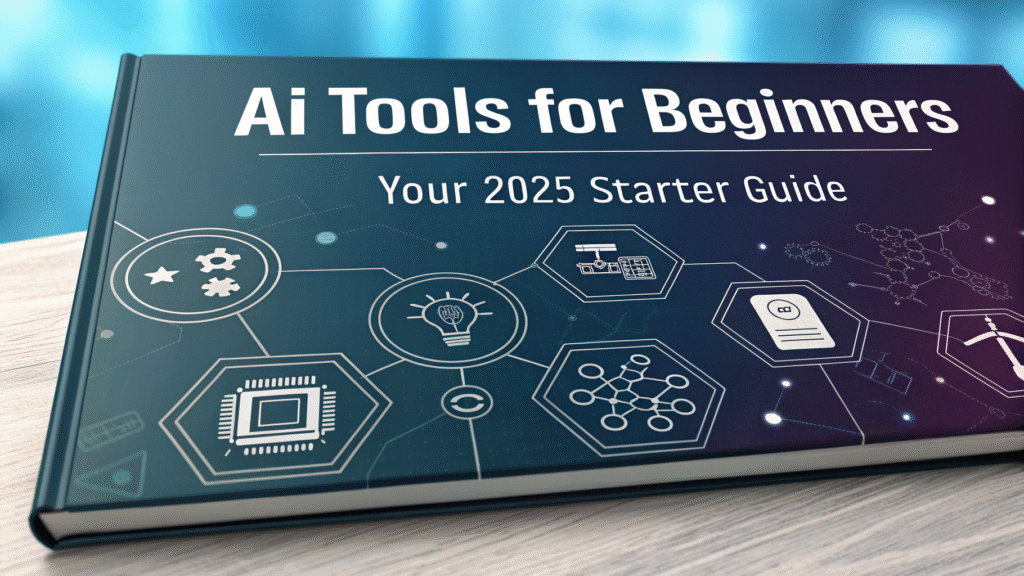
Introduction
The world of artificial intelligence is no longer science fiction; it’s a practical toolkit transforming how we work, create, and do business. If you’re an entrepreneur, marketer, or content creator, you’ve likely felt the pressure to jump on the AI bandwagon. But where do you even begin? The landscape can feel overwhelming. This guide is designed to cut through the noise. Welcome to your definitive starter guide to AI tools for beginners in 2025. We’ll demystify the technology, explore the most impactful tools, and provide actionable steps to integrate AI into your workflow seamlessly and effectively.
A Brief History & Evolution of AI Tools
AI isn’t a new concept, but its accessibility is. The journey began with complex, research-focused systems that required deep technical expertise.
- Early 2010s: AI was primarily the domain of large tech companies and academic institutions. Machine learning models were powerful but not user-friendly.
- Mid-2010s: The rise of cloud computing and APIs made AI capabilities like image recognition and language processing available to developers, who began building them into applications.
- The 2020s Revolution: The release of advanced generative AI models, like OpenAI’s GPT series, was a game-changer. Suddenly, tools with intuitive interfaces—like ChatGPT—allowed anyone to generate text, code, and ideas with a simple prompt.
Today, we’re in the era of democratized AI. The barrier to entry has vanished, making powerful AI tools for beginners not just a possibility but a necessity for staying competitive.
Who Should Use AI Tools? Audience & Demographics
While anyone can benefit, certain groups are poised to gain the most from adopting AI early.
- Entrepreneurs & Small Business Owners: From writing business plans and marketing copy to analyzing data and automating customer service, AI acts as a force multiplier.
- Marketers: AI excels at generating campaign ideas, writing ad copy, creating social media content, and performing SEO analysis.
- Content Creators (Writers, Designers, Videographers): Beat creative block, generate outlines, edit videos, create stunning images, and repurpose content efficiently.
- Students & Lifelong Learners: Use AI as a research assistant, summarization tool, and brainstorming partner to enhance learning.
If you fall into any of these categories, you are the perfect candidate for exploring AI tools for beginners.
Key Features & Functions of Modern AI Tools
Modern AI tools offer a stunning array of capabilities. Here’s a breakdown of the core functions you’ll encounter:
1. Generative AI
This is the ability to create new, original content from a prompt.
- Text Generation: Writing articles, emails, product descriptions, and code.
- Image Generation: Creating logos, marketing visuals, and artwork from text descriptions.
- Audio & Video Generation: Producing voiceovers, music, and even short video clips.
2. Content Analysis & Summarization
AI can process vast amounts of information quickly.
- Summarization: Condensing long reports, articles, or meeting transcripts into key takeaways.
- Sentiment Analysis: Determining the emotional tone of customer reviews or social media mentions.
3. Automation & Workflow Integration
This is where AI saves you the most time.
- Chatbots: Handling routine customer inquiries 24/7.
- Data Entry & Organization: Automatically sorting and categorizing information.
- Task Management: Integrating with tools like Trello or Asana to suggest next steps.
Unlocking Business & Marketing Potential
Integrating AI isn’t just about cool features; it’s about tangible business outcomes.
- Skyrocket Productivity: Automate repetitive tasks. What used to take hours can now take minutes, freeing you to focus on high-level strategy.
- Enhance Creativity: Use AI as a brainstorming partner. Generate 10 headline ideas in seconds or get a fresh perspective on a creative block.
- Improve Customer Experience: Deploy AI chatbots for instant support and use personalization engines to recommend products tailored to individual users.
- Data-Driven Decisions: Analyze market trends and customer data to make smarter, faster business decisions without being a data scientist.
For example, a small e-commerce store can use an AI tool like Shopify’s Sidekick to get insights on sales trends, or a marketer can use Jasper to A/B test different ad copies instantly.
Best Practices & Tips for Beginners
Starting with AI can be smooth if you follow a few simple guidelines.
- Start with a Clear Goal: Don’t use AI just for the sake of it. Ask, “What specific problem do I want to solve?” (e.g., “I need to write 5 blog posts a week.”).
- Master the Art of Prompting: The quality of the AI’s output depends heavily on your input. Be specific, provide context, and iterate. Instead of “write a tweet,” try “write an engaging tweet for marketers about the benefits of AI analytics tools, include a call-to-action, and keep it under 240 characters.”
- Treat AI as an Assistant, Not a Replacement: Always review, edit, and add your unique human touch to AI-generated content. It’s a collaborator, not an autopilot.
- Choose User-Friendly Tools: Begin with platforms known for their intuitive interfaces, like ChatGPT for text or Canva’s AI features for design.
Challenges & Limitations to Keep in Mind
As powerful as AI is, it’s crucial to understand its current limitations.
- Accuracy & “Hallucinations”: AI can sometimes generate plausible-sounding but incorrect or fabricated information. Always fact-check critical data.
- Lack of True Understanding: AI operates on patterns, not genuine comprehension. It doesn’t “understand” your business or emotions the way a human does.
- Data Privacy: Be mindful of the information you input into public AI tools. Avoid sharing sensitive personal or company data.
- Potential for Generic Output: Without careful prompting, AI can produce content that lacks a unique voice or deep insight.
The Future Outlook of AI Tools
The pace of innovation is accelerating. Looking ahead, we can expect:
- Hyper-Personalization: AI will deliver increasingly tailored experiences for individual users and customers.
- Seamless Multi-Modal AI: Tools will effortlessly combine text, image, audio, and video generation in a single workflow.
- Increased Integration: AI will become a baked-in feature of the software we already use, from Microsoft Office to Adobe Creative Suite.
- More Specialized Tools: We’ll see a rise in AI tools designed for specific niches, like legal research or medical diagnostics.
Staying informed about these trends will help you continue to leverage AI effectively.

Conclusion
Embracing AI tools for beginners is one of the most strategic moves you can make in 2025. It’s not about replacing human ingenuity but augmenting it. By starting with a clear goal, mastering basic prompting, and choosing the right tools, you can unlock new levels of productivity, creativity, and growth. The future of work is intelligent, collaborative, and powered by AI. The best time to start was yesterday; the next best time is now.